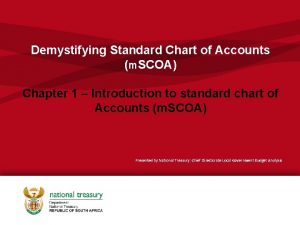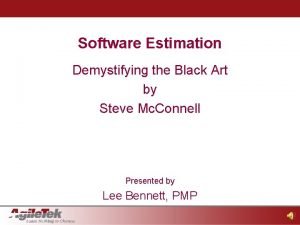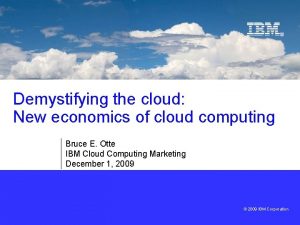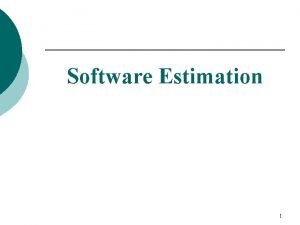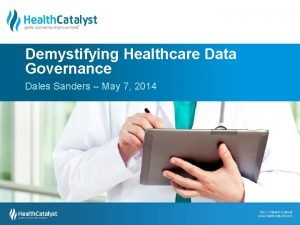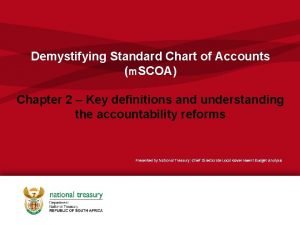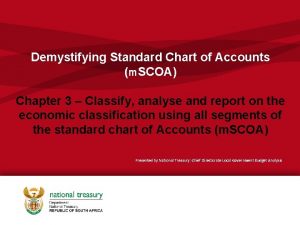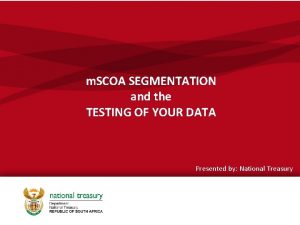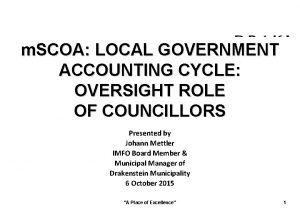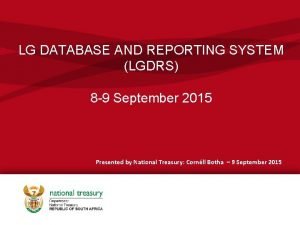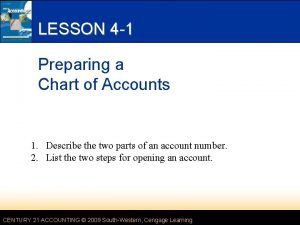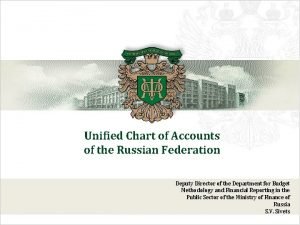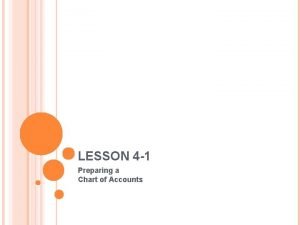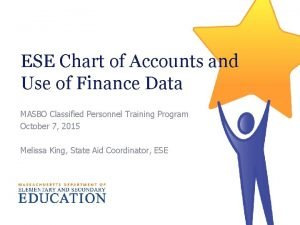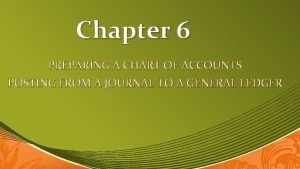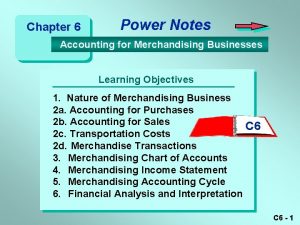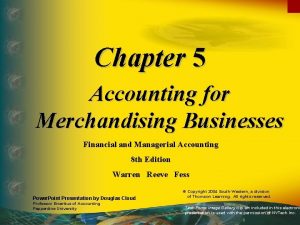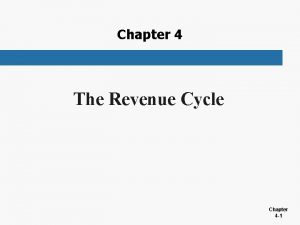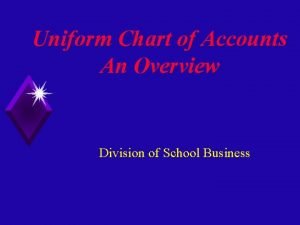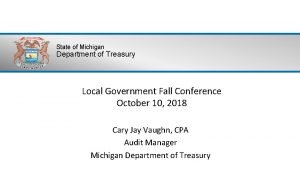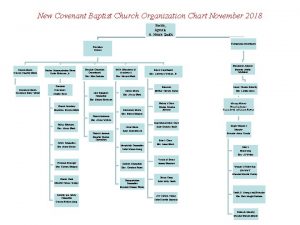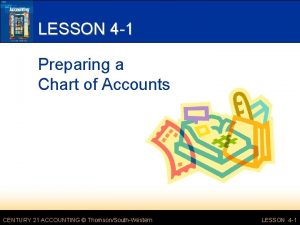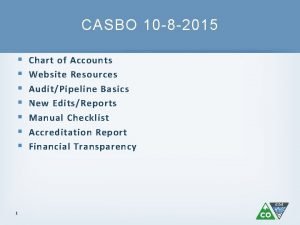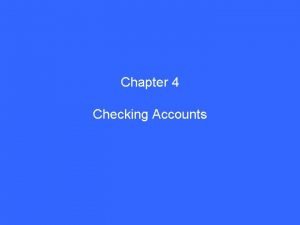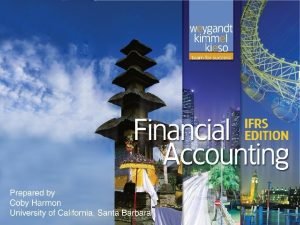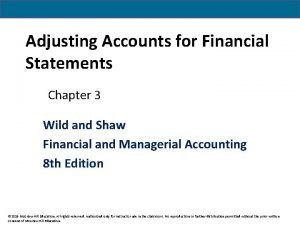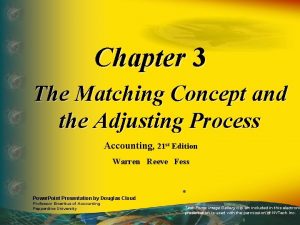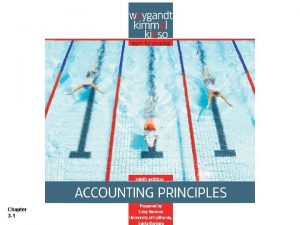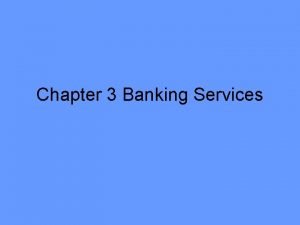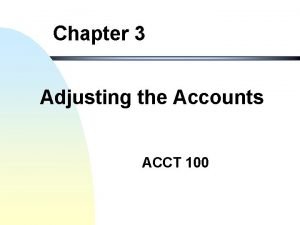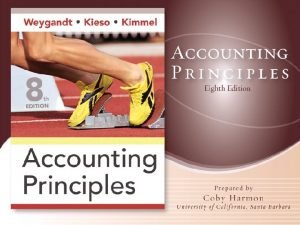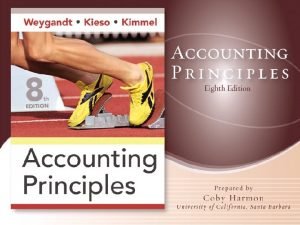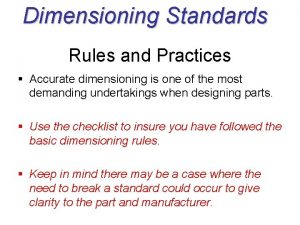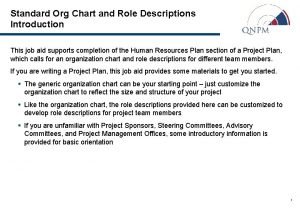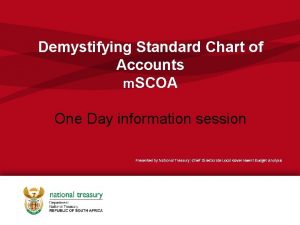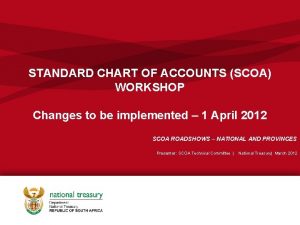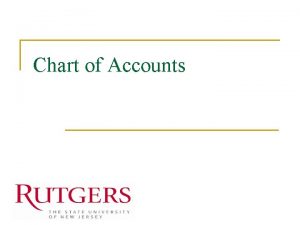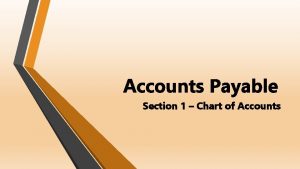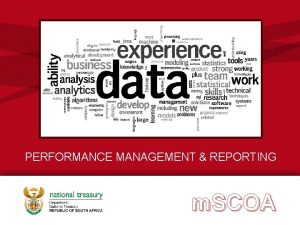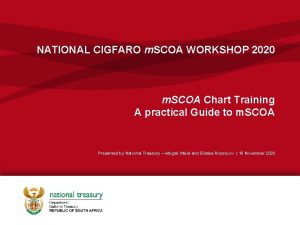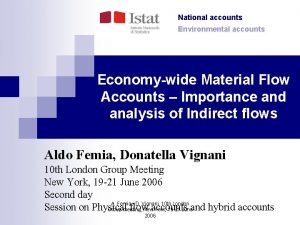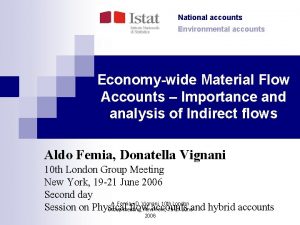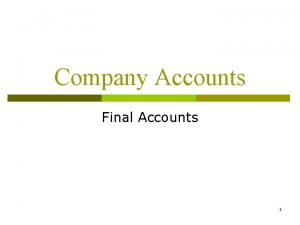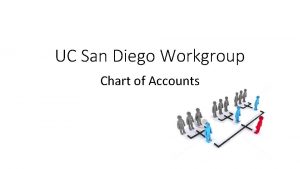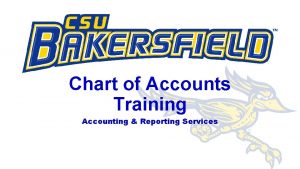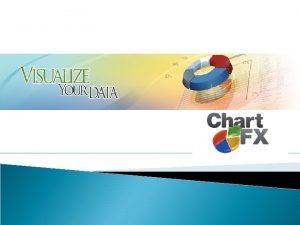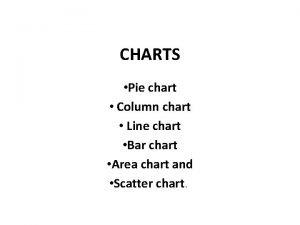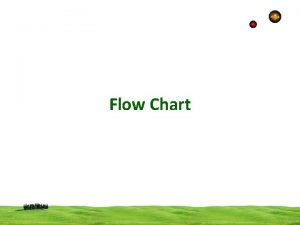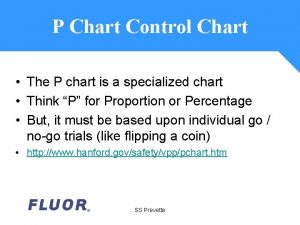Demystifying Standard Chart of Accounts m SCOA Chapter












































- Slides: 44

Demystifying Standard Chart of Accounts (m. SCOA) Chapter 2 – Key definitions and understanding the accountability reforms Presented by National Treasury: Chief Directorate Local Government Budget Analysis

Outcomes • Explain the background and components within the municipal accountability cycle. • Categorise revenue in accordance with reporting formats. • Categorise expenditure (capital and operational) in accordance with the reporting formats. • Have a general understanding of VAT in the municipal environment. • Explain the outcome of non cash transactions and other transactions in “assets, liabilities and net assets” within the m. SCOA classification. 2

Financial Reforms - Municipal Accountability Cycle NDP MTSF

Financial Reforms - Municipal Accountability Cycle • NDP – National Development Plan • MTSF – Medium Term Strategic Framework • Integrated development plans (IDP) – This sets out the goals and development plans, which need to be aligned with the municipality's available resources. Council adopts the IDP and undertakes an annual review and assessment of performance based on the annual report. • Budget – The three year budget sets out the revenue raising and expenditure plan for the municipality for approval by council. The allocation of funds needs to be aligned with the priorities in the IDP. • Service delivery and budget implementation plan (SDBIP) – Sets out monthly and quarterly service delivery and financial targets aligned with the annual targets set in the IDP and budget. It lays the basis for the performance agreements of the municipal manager and senior management. • In year reports – The administration reports to council on the implementation of the budget and SDBIP through monthly, quarterly and mid year reports. Council uses these reports to monitor both the financial and service delivery performance of the municipality's implementation actions.

Financial Reforms - Municipal Accountability Cycle • • • Annual financial statements – Reports on the implementation of the budget, and reflect the financial position of the municipality. They are submitted to the Auditor General, who issues an audit report indicating the reliance council can place on the statements in exercising oversight. Annual Report – It is the primary instrument of accountability, in which the mayor and municipal manager report on the implementation performance in relation to the budget and the SDBIP, and the progress being made in realising the IDP priorities. Oversight report – Council produces an oversight report based on outcomes highlighted in the annual report and actual performance.

Budget process timelines – 2015/2016 – Pilot municipalities 6

Budget process timelines • Non pilot municipalities/municipal entities must prepare an m. SCOA aligned budget to be adopted by 30 June 2017. – What are the implications of the above for you ? • Refer to implementation of m. SCOA in your municipality – last presentation 7

Purpose of reports from the accountability cycle • The main purpose of the reports as stated in the accountability cycle is to provide information about sources of revenue and use of funds. • Broadly, the main purpose of whole of government operations is to use public resources to: • • regulate relevant aspects of society and the economy • provide services to the community in areas where there is market failure • build, improve and maintain infrastructure • redistribute wealth according to nationally determined criteria. To fulfil these functions effectively, whole of government must raise revenue and it must spend, and the reports (from the accountability cycle) provides the analytical presentation of local government revenue and expenditure.

Budget tables – Revenue by source 9

SDBIP – Revenue by source 10

Categorise revenue in accordance with reporting formats – S 71 report 11

Annual Financial Statements – Revenue by source 12

Budget tables – expenditure (Operational) 13

Categorise expenditure in accordance with reporting formats – S 71 report 14

Annual Financial Statements – Expenditure operational 15

Budget tables – expenditure (capital) 16

Annual Financial Statements – Financial position. Capital 17

Current collection method and processes 18

Intended collection method and processes 19

Key points in respect to change to data collection • • The current reporting processes concentrate on people with the financial system as a side issue which can easily be ignored / used / abused. The new collection method will place the emphasis where is should be - the centralised financial system. This will ensure that reporting on budgets / in-year results / AFS is always aligned. The current process requires a lot of intervention from NT to ensure integrity and quality of data. With the implementation of m. SCOA all quality checks and control reports will be generated in the municipality. NT is currently researching methods and technologies for the most effective collection of information being reported by municipalities. Non-piloting municipalities will continue to report using the current processes to ensure continued S 71 publications. Piloting municipalities will start to use the new reporting method BUT must be able to fall back onto the old method if any problems or connectivity issues are experienced. NT will cater for both reporting methods until most municipalities have implemented m. SCOA successfully. 20

Revenue • What is revenue – The gross inflow of economic benefits or service potential during the reporting period when those inflows result in an increase in net assets, other than increases relating to contributions from owners. • 2 Categories of revenue • Exchange • Non-exchange • 3 broad sources • Tax revenue • Transfers • Municipal activities 21

Revenue 22

Revenue - Key definitions • • • Exchange transactions – Are transactions in which one entity receives assets or service, or has liabilities extinguished, and directly gives approximately equal value (primarily in the form of cash, goods, services or use of assets) to another entity in exchange Non exchange transactions – The municipality either receives value from another entity without directly giving approximately equal value in exchange or gives value to another entity without directly receiving approximately equal value in exchange. Contra Accounts - Revenue – Covers all rates rebates, exemption and discounts given to households and other customer groups either in general or specifically. Covers all free services or service discounts given in relation to services for which the municipality normally charges. Must not include the cost of debt write offs. 23

Revenue – Rules to remember Sale of goods and services Tax receipts Fines, Forfeits, Penalties Non exchange Outside of the courts Imposed by the court Individual’s choice Complying with law Contravention of law Regulation/ Administration Fees charged > cost Fees not related to costs Fees charged = cost recovery Rates Traffic Fine Exchange Registration fee 24

Revenue – An example • In the City of Cape Town , Mrs. Cole receives R 100 from Mr. Xang in respect to sale of tender documents. Mrs Cole prepares a receipt to be handed to Mr. Xang. – How would you classify this revenue transaction? 25

Revenue – An example 26

Revenue – The solution m. SCOA item - Exchange Revenue: Sales of Goods and Rendering of Services – Sale of Goods: Publications - Tender Documents 27

Expenditure • What is expenditure – Expenses are decreases in economic benefits or service potential during the reporting period in form of outflows or consumption of assets or incurrence’s of liabilities that result in decreases in net assets, other than those relating to distributions to owners. • 2 main categories of expenditure • Operational • Capital 28

Expenditure - Operational 29

Key definitions – Expenditure (operational) • • Contra accounts - expenses – Revenue forgone is reflected as “income” on the revenue side and “expenditure” on the expenditure side. Depreciation and amortisation – Depreciation is the systematic allocation of the cost of an asset from the Statement of Financial Position to Depreciation Expense on the Statement of Financial Performance over the useful life of the asset. Amortisation is the systematic allocation of the discount, premium or issue cost of a financial instrument over the life of the instrument, or an intangible asset over a certain period. Amortisation is the systematic allocation of the depreciable amount of an intangible asset over its useful life. Operational Costs – An operating expense is a day-to-day expense such as sales and administration, or research & development, accounting expenses, license fees, advertising, office expenses, utilities such as telephone, insurance, property management, travel and vehicle expenses. Transfers and subsidies – Unrequited payments made by the municipality. Unrequited has the same meaning as non exchange transaction, however transfers and subsidies refers to payments being made. It includes both current and capital transfers. 30

Expenditure (Operational) – An example • Mrs Khumalo is a municipal manager in municipality Y. She has an invoice from ABS Consulting Services (Pty) Ltd for the sum of R 125, 350. The invoice was for a consulting firm conducting an empowerment exercise relating to the internal audit function at the municipality. – How would you classify this expenditure transaction? 31

Expenditure - Operational 32

Expenditure – Operational - Solution m. SCOA Allocation: Expenditure: Contracted Services - Outsourced Services: Business and Advisory - Organisational 33

Expenditure – Capital 34

Expenditure – Capital – net assets 35

Key definitions • • Assets – Assets are resources controlled by the municipality as a result of past events and from which future economic benefits or service potential are expected to flow to the municipality. Current Assets – Refers to assets which would recover in no more than 12 months after the reporting date or if the normal operating cycle is more than 12 months the longer period. Net Assets – Retained earnings or accumulated deficit being the cumulative effect of differences between assets and liabilities as per statement of financial position. Non-current assets – Refers to assets which would recover after 12 months or after the normal operating cycle of the municipality 36

Key definitions • • • Receivables from Non-exchange Transactions – This account is used for recording amounts receivable due from non-exchange transactions, such as insurance claims, rates and other taxes, subsidies, road reinstatements, repayments resulting from unauthorised expenditure. Trade and Other Receivables from Exchange Transactions – A current asset resulting from selling goods or services on credit (on account) such as water, electricity Property, Plant and Equipment – A major classification on the statement of financial position. Included are land, buildings, leasehold improvements, equipment, furniture, fixtures, delivery trucks, automobiles, etc. A distinction is made between "owned assets" and assets subjected to financial leases labelled as "leased assets". 37

Expenditure (Capital ) – An example • Mrs Hendriks is a municipal official responsible for capital spending. She authorises an invoices to be paid for the purchase of a office furniture for the value of R 228, 000. – How would you classify this expenditure transaction? 38

Expenditure – (Capital) - An example 39

Expenditure – (Capital) - Solution m. SCOA allocation : Non-current Assets: Property, Plant and Equipment - Owned: Cost - Furniture and Office Equipment: All or excl NERSA - Acquisitions 40

VAT in municipalities • • SARS have issued VAT guide 419 on the 30 March 2011. m. SCOA does not change the way the municipality accounts for VAT. Within the classification system you budget for VAT as you account for it. System vendors will need to configure the systems to deal with the following type of VAT transactions. 41

Non cash transactions • The municipality has many non cash transactions for example • Depreciation • Free services – contra accounts • Gains • Losses • These will be dealt with during the training of financial management practitioners, we focus on some of the key definitions. 42

Non cash transactions - Key definitions • • Gains – represent other items that meet the definition of revenue and may, or may not arise in the course of the operating activities of the municipality. Gains represent increases in economic benefits or service potential and as such are no different in nature from revenue. Losses – represent other items that meet the definition of expenses and may, or may not, arise in the course of the operating activities of the entity. Losses represent decreases in economic benefits or service potential and as such, they are no different in nature from other expenses. 43

Questions 44
 Scoa chart of accounts
Scoa chart of accounts Software estimation demystifying the black art
Software estimation demystifying the black art North carolina digital government summit
North carolina digital government summit Software estimation demystifying the black art
Software estimation demystifying the black art Demystifying face recognition
Demystifying face recognition Demystifying healthcare data governance
Demystifying healthcare data governance Municipal standard chart of accounts
Municipal standard chart of accounts Scoa segments
Scoa segments Scoa segments
Scoa segments Government accounting cycle
Government accounting cycle Lg upload portal
Lg upload portal Chapter 4 test a part two preparing a chart of accounts
Chapter 4 test a part two preparing a chart of accounts Rus chart of accounts
Rus chart of accounts Preparing a chart of accounts
Preparing a chart of accounts Dese chart of accounts
Dese chart of accounts Preparing ledger accounts
Preparing ledger accounts Merchandising business balance sheet
Merchandising business balance sheet A chart of accounts for a merchandising business
A chart of accounts for a merchandising business Chapter 4 revenue cycle management
Chapter 4 revenue cycle management Kent’s go karts chart of accounts
Kent’s go karts chart of accounts The uniform chart of accounts
The uniform chart of accounts Michigan uniform chart of accounts
Michigan uniform chart of accounts Baptist church organizational flow chart
Baptist church organizational flow chart Preparing a chart of accounts
Preparing a chart of accounts Cde chart of accounts
Cde chart of accounts Pie chart the great gatsby chapter 9 blame chart answers
Pie chart the great gatsby chapter 9 blame chart answers Standard error of the mean
Standard error of the mean Language
Language Standard cost accounting
Standard cost accounting Mbk berkefungsian sederhana
Mbk berkefungsian sederhana Chapter 4 checking accounts answer key
Chapter 4 checking accounts answer key Chapter 3 adjusting accounts for financial statements
Chapter 3 adjusting accounts for financial statements Accrued expenses adjusting entry
Accrued expenses adjusting entry Chapter 5 savings accounts
Chapter 5 savings accounts Chapter 3 adjusting accounts for financial statements
Chapter 3 adjusting accounts for financial statements Adjusting the accounts chapter 3 solutions
Adjusting the accounts chapter 3 solutions Accrued revenue adjusting entry
Accrued revenue adjusting entry Chapter 30 savings accounts
Chapter 30 savings accounts Parts of a check
Parts of a check Check register reconciliation 3-4
Check register reconciliation 3-4 Chapter 3 adjusting accounts for financial statements
Chapter 3 adjusting accounts for financial statements Adjusting the accounts chapter 3
Adjusting the accounts chapter 3 Chapter 3 adjusting accounts for financial statements
Chapter 3 adjusting accounts for financial statements Hole dimensioning standards
Hole dimensioning standards Standard org chart
Standard org chart
